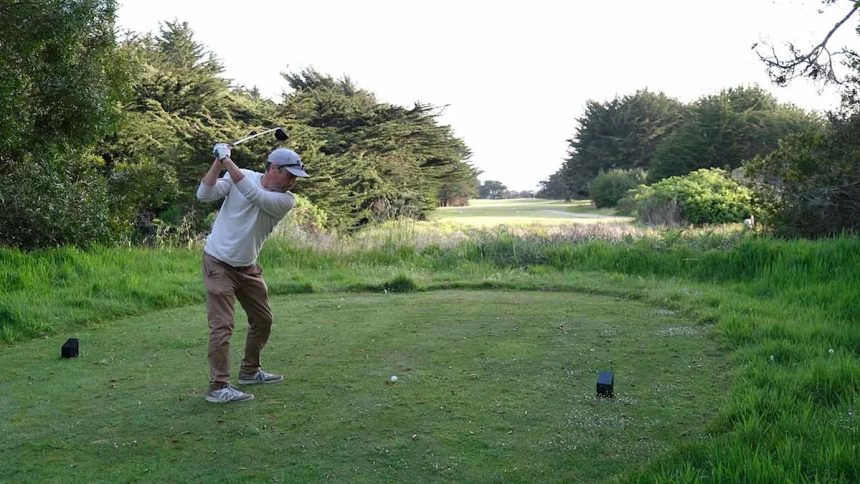Three hours north of San Francisco, past the redwoods and reliable cell reception, lies an anomaly of a golf course, one that never got the memo about exclusivity and exorbitant green fees.
For decades along the northern Sonoma Coast, Sea Ranch Golf Links offered priceless Pacific views on a minimalist layout for well under $100 a round. Anyone could play it. Not many people did. The course attracted a faithful band of locals and a small cult following from elsewhere. But on most days, you could walk into the pro shop unannounced and have no trouble getting out.
In conventional golf-operator terms, Sea Ranch made little sense. Nor did it make money. This past January, ownership decided that enough was enough. It shut down the course, citing “unsustainable” financial losses. The closure didn’t count as major national news. But for locals, it cut deep. A group of them rallied, and their nine-month campaign has now paid off. Sea Ranch is coming back to life.
“There was no opposition,” says Dale Carlsen, a longtime Sea Ranch homeowner who helped spearhead the effort. “The community was excited. And we’re excited to welcome people back.”
To understand Sea Ranch’s death and revival, it helps to know a bit about its birth. The course took shape in stages – the front nine opened in 1974, the back in 1995 – and, like the residential community it serves, it was rooted in a distinct moment in time. Conceived in the 1960s amid the stirrings of the environmental movement, Sea Ranch was envisioned as a place that would, in the words of its planners, “work in harmony with nature.” Instead of subdivisions, its plan called for clusters of unpainted, wood-sided homes, many by notable modern architects, all meant to blend into the coastal landscape. The golf course followed that same philosophy. Robert Muir Graves, who designed all 18 holes, laid out the routing gently on the terrain – there was no other way. Even by California’s strict standards, Sea Ranch’s building codes are famously exacting.
Like many remote areas, Sea Ranch boomed during Covid. Real estate skyrocketed. Though the market has since settled, the median home price in the community, as of August 2025, was $1.3 million, according to Redfin. Unlike many residential communities with golf, Sea Ranch homeowners are not assessed a fee to help sustain the course, but many residents pay for an annual golf membership that covers unlimited play.
Sea Ranch is also home to a lodge, with a restaurant and seaside accommodations. During the pandemic, that lodge and the course were acquired by an investment group that included Patrick and John Collinson, the billionaire cofounders of the payment-services company, Stripe. Soon after taking over, new ownership renovated the Sea Ranch clubhouse, upgraded the driving range and ramped up maintenance. During a temporary winter closure, it also restructured its membership, increasing the annual dues from $3,500 to $5,000.
But that did not come close to balancing the books. In January, when the course shut down, a Sea Ranch representative told GOLF.com that the golf operation was losing “hundreds of thousands of dollars a year.”
Reviving the course called for creative thinking, which led to a solution that fits nicely with the founding philosophy of the community and the course. Carlsen and others involved in the effort established a nonprofit, North Coast Preservation Society, which has leased the course for $1 a year. The nonprofit will focus on protecting the area’s flora, fauna, coastal views, recreational uses and educational programs. At the same time, a for-profit entity, North Coast Links, has been set up to tend to business operations. In a recent letter to residents, Sea Ranch management announced the return of a course “that is uniquely owned by this community.”
Even after the January shutdown, ownership kept the grounds crew at work. Conditions, always a touch scruffy by design, remain on the shaggy side, so for now only limited play is allowed. KemperSports – which manages such marquee resorts as Bandon Dunes and Sand Valley – has been brought in to handle operations. An official reopening is slated for around Thanksgiving, with the exact date still to come.
Green fees will rise modestly but remain a relative bargain, maxing out at $85 on weekends. A new membership plan is also in the works. Beyond reviving a community fixture, Carlsen says, the aim is to make Sea Ranch a stop on a broader loop – a trip that might also take in the Presidio in San Francisco, Northwood, Alister Mackenzie’s nine-holer in the redwoods of Sonoma County, and the Links at Bodega Harbour, 80 minutes to the south. For more information, visit golfsearanch.com.
InsideGolf
Explore our all-new Course Finder
Golf courses near you? Search here!
The post How a shuttered coastal course in California came back to life appeared first on Golf.









